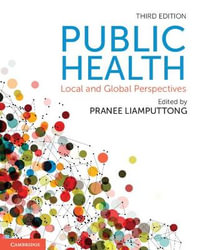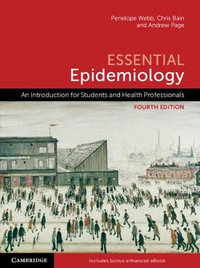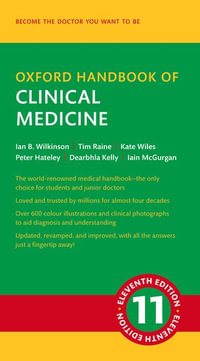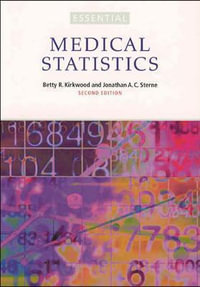1 Introduction: Biostatistics and R.- 1.1 Purpose of this Text.- 1.2 Development of Biostatistics.- 1.3 Development of R.- 1.4 How R is Used in this Text.- 1.5 Import Data into R.- 1.6 Addendum1: Efficient Programming with R, Project Workflow, and Good Programming Practices (gpp).- 1.7 Addendum2: Preview of Descriptive Statistics and Graphics Using R.- 1.8 Addendum3: R and Beautiful Graphics.- 1.9 Addendum4: Research Designs Used in Biostatistics.- 1.10 Prepare to Exit, Save, and Later Retrieve this R Session.- 1.11 External Data and/or Data Resources Used in this Lesson.- 2 Data Exploration, Descriptive Statistics, and Measures of Central Tendency.- 2.1 Background.- 2.2 Import Data in Comma-Separated Values (.csv) File Format and/or Self Generate the Data Using R-Based Functions.- 2.3 Organize the Data and Display the Code Book.- 2.4 Conduct a Visual Data Check Using Graphics (e.g., Figures).- 2.5 Descriptive Statistics for Initial Analysis of the Data.- 2.6 Quality Assurance, Data Distribution, and Tests for Normality.- 2.7 Statistical Test(s).- 2.8 Summary.- 2.9 Addendum1: Specialized External Packages and Functions.- 2.10 Addendum2: Parametric v Nonparametric.- 2.11 Addendum3: Additional Practice Datasets for Data with Normal Distribution Patterns and Data That Do Not Exhibit Normal Distribution Patterns.- 2.12 Prepare to Exit, Save, and Later Retrieve this R Session.- 2.13 External Data and/or Data Resources Used in this Lesson.- 3 Student's t-Test for Independent Samples.- 3.1 Background.- 3.2 Import Data in Comma-Separated Values (.csv) File Format and/or Self Generate the Data Using R-Based Functions.- 3.3 Organize the Data and Display the Code Book.- 3.4 Conduct a Visual Data Check Using Graphics (e.g., Figures).- 3.5 Descriptive Statistics for Initial Analysis of the Data.- 3.6 Quality Assurance, Data Distribution, and Tests for Normality.- 3.7 Statistical Test(s).- 3.8 Summary of Outcomes.- 3.9 Addendum1: t-Statistic v z-Statistic.- 3.10 Addendum2: Parametric v Nonparametric.- 3.11 Addendum3: Additional Practice Datasets for Data with Normal Distribution Patterns and Data That Do Not Exhibit Normal Distribution Patterns.- 3.12 Prepare to Exit, Save, and Later Retrieve This R Session.- 3.13 External Data and/or Data Resources Used in this Lesson.- 4 Student's t-Test for Matched Pairs.- 4.1 Background.- 4.2 Import Data in Comma-Separated Values (.csv) File Format and/or Self Generate the Data Using R-Based Functions.- 4.3 Organize the Data and Display the Code Book.- 4.4 Conduct a Visual Data Check Using Graphics(e.g., Figures).- 4.5 Descriptive Statistics for Initial Analysis of the Data.- 4.6 Quality Assurance, Data Distribution, and Tests for Normality.- 4.7 Statistical Test(s).- 4.8 Summary of Outcomes.- 4.9 Addendum1: R-Based Tools for Unstacked (e.g. Wide) Data.- 4.10 Addendum2: Stacked Data and Student's t-Test for Matched Pairs.- 4.11 Addendum 3: The Impact of N on Student's t-Test.- 4.12 Addendum 4: Parametric v Nonparametric.- 4.13 Addendum5: Additional Practice Datasets for Data with Normal Distribution Patterns and Data That Do Not Exhibit Normal Distribution Patterns.- 4.14 Prepare to Exit, Save, and Later Retrieve This R Session.- 4.15 External Data and/or Data Resources Used in this Lesson.- 5 Oneway Analysis of Variance (ANOVA).- 5.1 Background.- 5.2 Import Data in Comma-Separated Values (.csv) File Format and/or Self Generate the Data Using R-Based Functions.- 5.3 Organize the Data and Display the Code Book.- 5.4 Conduct a Visual Data Check Using Graphics(e.g., Figures).- 5.5 Descriptive Statistics for Initial Analysis of the Data.- 5.6 Quality Assurance, Data Distribution, and Tests for Normality.- 5.7 Statistical Test(s).- 5.8 Summary of Outcomes.- 5.9 Addendum1: Other Packages for Display of Oneway ANOVA.- 5.10 Addendum2: Parametric v Nonparametric.- 5.11 Addendum3: Additional Practice Data Sets.- 5.12 Prepare to Exit, Save, and Later Retrieve This R Session.- 5.13 External Data a...
Industry Reviews
"The strengths include the ideal analysis containing both graphical and statistical output as well as a variety of datasets ... . the authors provide a number of R packages for obtaining the same results, such as graphics or statistics output. ... Each chapter is so complete that it can be read in any order; learned readers will probably jump back and forth between the chapters. This book can be used for self-learning or teaching purpose on the subject." (Shu-Hui Wen, Biometrics, Vol. 78 (2), July, 2022)
























